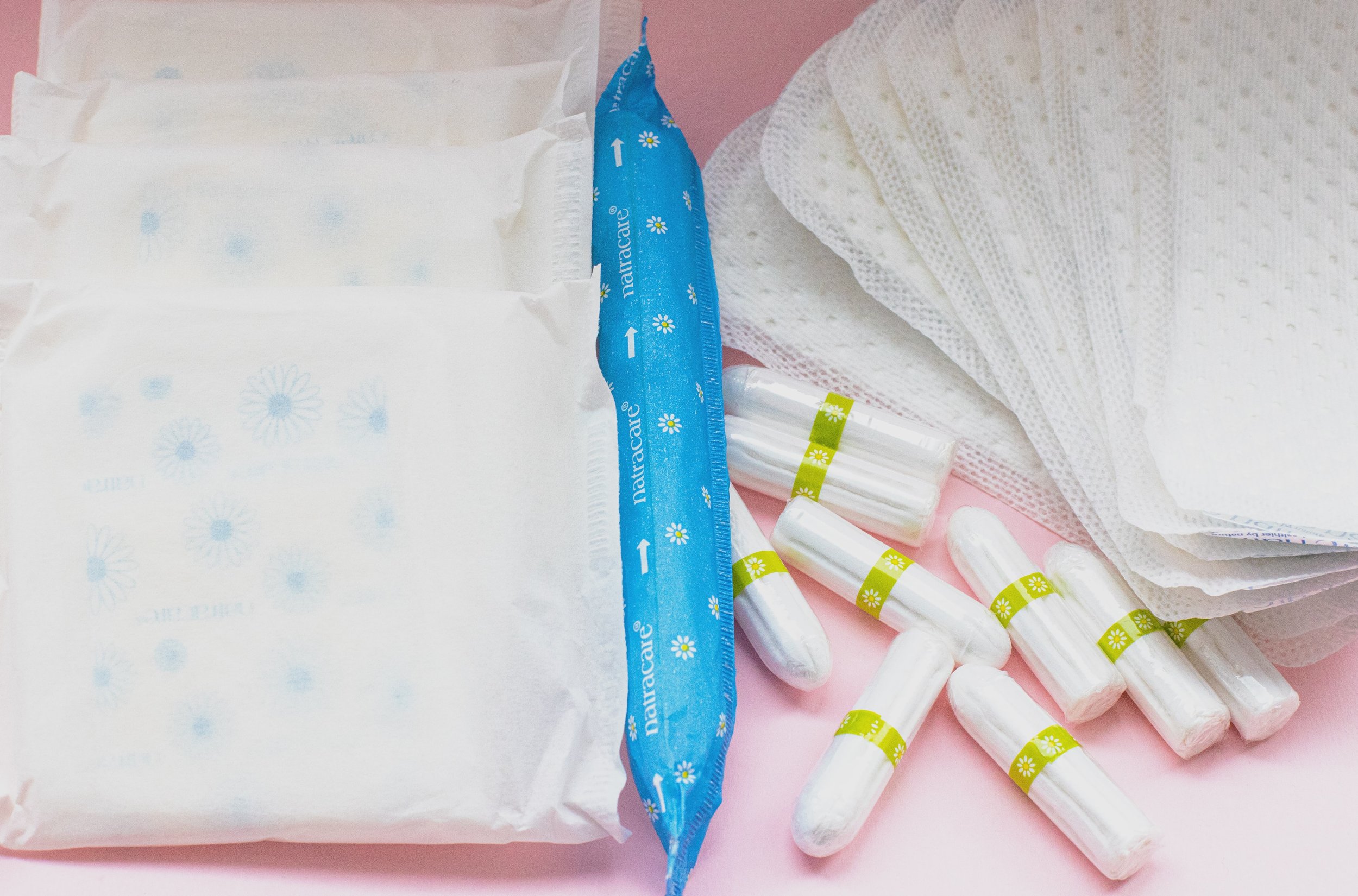Political Period Pains
*This post was created in collaboration with @ShopHereForHer
LANGUAGE CHECK: In this post, we explore menstruation and menstrual equity. A reminder that people menstruate; including women, trans men, gender non-binary and 2Spirit people.
Menstrual Health Day
Toronto has been recognizing Menstrual Hygiene* Day since 2019 on May 28th. It’s a global day of action where organizations around the world work together to eradicate period poverty .
DYK: 28 signifies the average length of a menstrual cycle!
Cities like Toronto, Hamilton, London, and others across Canada will be lighting up RED to support the fight against menstrual equity.
*Many organizations/advocates in Canada choose to celebrate menstrual HEALTH day rather than hygiene - as the word “hygiene” continues to reinforce the stigma existing around menstruation
What is Menstrual equity?
The term “Menstrual Equity” was created not too long ago by activist Jennifer Weiss-Wolf in 2015 and it speaks to the safety, affordability, and availability of menstrual products for everyone who needs them.
According to Here for Her, Menstrual Equity describes: the disproportionate amount menstruation affects those who menstruate compared to those who do not, i.e. the added expense for purchasing products, anxiety & side effects surrounding periods, and more.
By the numbers
$6000: Estimated lifetime cost of period products (at minimum)
2/3 of youth in Canada have had to miss out on an activity because of their period and concerns about not being able to access menstrual products.
Menstrual products are one the most requested items at Canadian food banks and shelters.
$45: In Indigenous communities, tampons can retail for over $45, compared $13 on average nationally. Not to mention period poverty is compounded by a lack of food security and access to clean water.
Menstrual Equity
For too long, folks who menstruate have had to just “figure it out.”
Every day, Canadians are forced to make the decision between having dinner (for themselves and their family) or buying menstrual products. When low-income folk choose food over tampons, everyone will know they're menstruating, but if they choose tampons over food no one will know they are hungry.
Do we think these sorts of decisions are acceptable in a country as wealthy and "civilized" as Canada?
This is an economic vulnerability that affects all aspects of people who menstruate's lives: when you don't have access to menstrual projects at work, at school, etc., you will miss out on key opportunities. And there's an easy solution: providing period products in all public washrooms.
The Stigma is Real
Even in North America, periods are still stigmatized and continue to be something people are embarrassed over.
So many of us have experienced this. You're in a public setting, out with friends, and someone realizes they have to change their tampon. How often is it something they whisper at the table - even when surrounded by menstruators. Or discreetly grabbing a tampon and slipping it up their sleeves before discretely running off to the restroom.
With intersectional identities, this can become even more complex. Menstrual inequities disproportionately impact Black, Indigenous and people of colour, people with disabilities, as well as trans and non-binary individuals. Especially since so many immigrant communities can have their own cultural stigmas and patriarchal views on the very normal and natural subject.
Making progress
Municipal
In 2019, London became the 1st city in Canada to provide free menstrual products in all publicly accessible, city-owned buildings. The TVDSB, TDSB along with other school boards have begun implementing free menstrual product programs.
Provincial
British Columbia and Nova Scotia have mandated that free menstrual products must be provided in all schools (& Ontario distributes $6 million in free menstrual products to schools per year).
Federal
The federal government ended the period tax in 2015, has implemented a $25M Menstrual Equity Fund, and promised free products in federally regulated workplaces.
What this tells us:
Menstrual equity absolutely can and should be a priority at all levels of government. And more than that, we need to keep holding our goverments accountable for these promises—Trudeau claims to be a feminist: let's see him show up for menstrual equity.
Period Pains: Where do we go from here?
Make Menstrual Products available in all public washrooms
Menstrual products are an essential item — an essential item which remains incredibly expensive in Canada, making it out of reach for many homeless, low-income, and marginalized people who menstruate. And it's not just about schools and federally regulated buildings, it's about showing up in all spaces, especially for our most vulnerable communities.
Look, we've had toilet paper provided in every public washroom, and we've never blinked about it. It's a necessity and a biological process! How are period products any different?
Support Organizations in Canada doing work in this space
Donate menstrual products to your local shelters!
Photo by Annika Gordon on Unsplash
TL;DR
The pink tax refers to the inflated prices of "women's versions" of everyday products. They often come in smaller sizes with fancy packaging, yet they're more expensive.
On average, women pay an extra $1,351 each year, and tbh we're kinda sick of being paid less and expected to pay more!
Our federal government has taken action on the issue of menstruation product taxation and needs to do the same here, and end the pink tax.
Source: Here For Her; Plan Canada; CPHA; Toronto Star; Borgen Project; BC Gov; ON Gov



